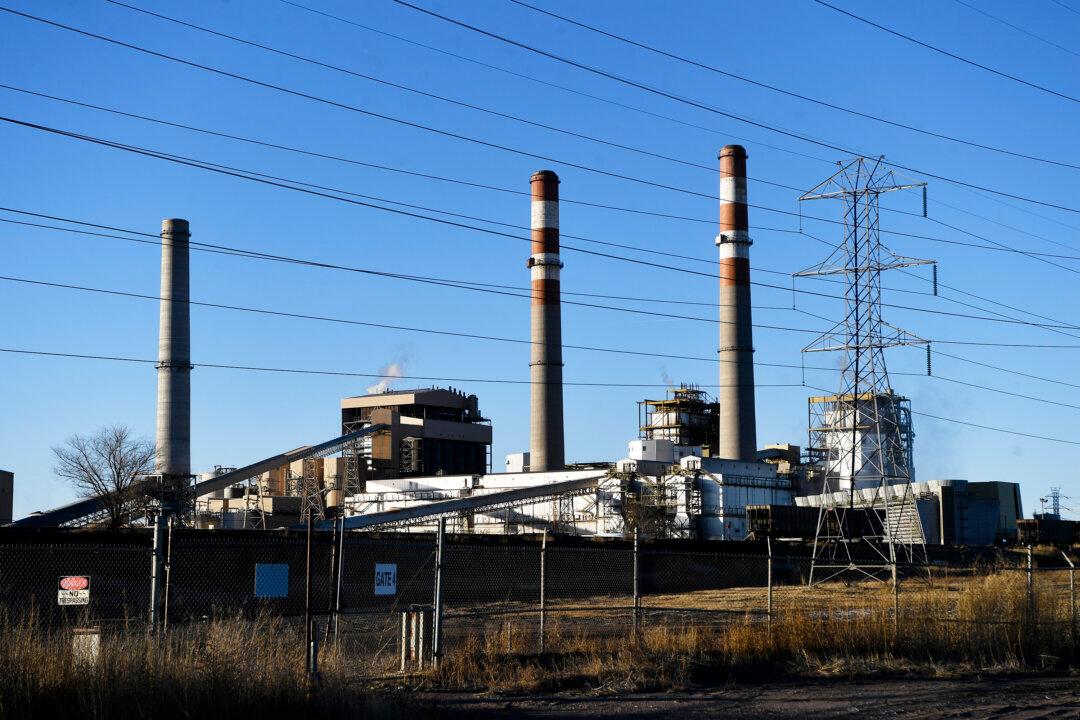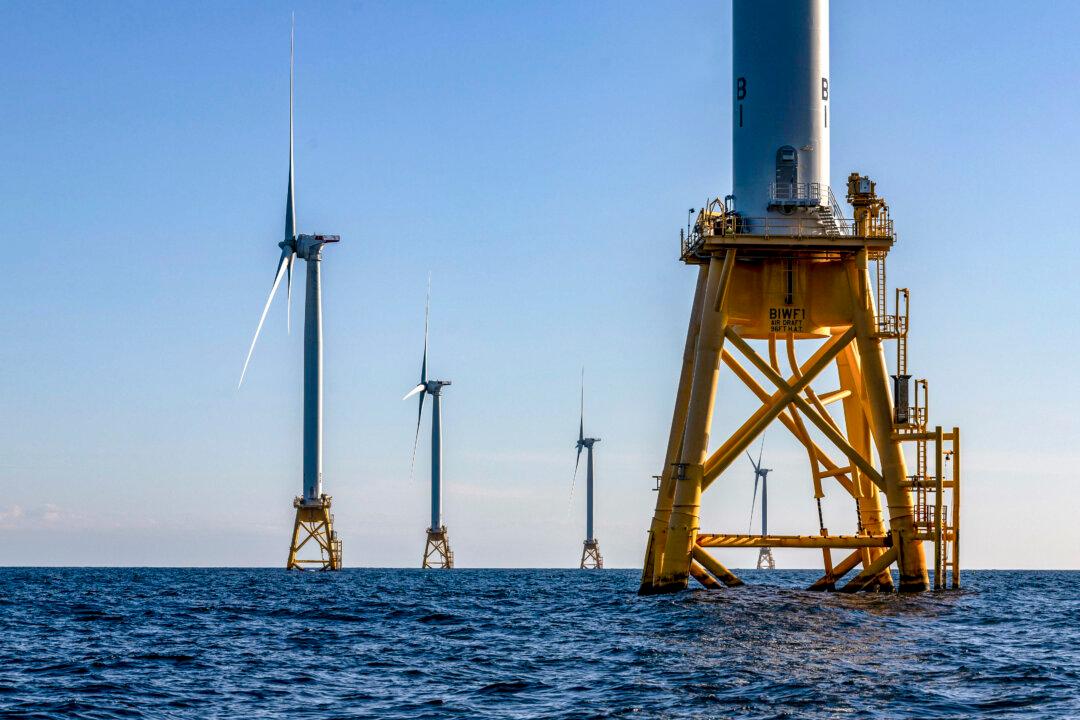North Korea’s 40-minute test launch of a new solid-fuel intercontinental ballistic missile on April 13 sparked evacuations on Japan’s Hokkaido Island, and analysts to sound the alarm that the new missile would make it easier for the regime to facilitate a nuclear attack.
The launch off North Korea’s east coast into the Sea of Japan was documented in real-time by South Korea’s military, which classified it as an intermediate or long-range missile.
On April 14, in a statement by state-run Korean Central News Agency (KCNA), North Korea announced it had successfully launched a three-stage Hwasong-18 ICBM.
“A new type of intercontinental ballistic missile was test fired on Thursday as the key means of strategic military force,” KCNA said, describing the test as a “miraculous success.”
Often referred to as “a firecracker rocket,” the Hwasong-18 uses a solid chemical-mixture propellant cast into the missile’s airframe at 5,000 degrees to generate enough thrust to launch multi-stage missiles and warheads.
Liquid-fueled missiles require fuel and oxidizer to be inserted before they can be launched, which require numerous time-consuming, cumbersome steps. Once hours-long fueling has begun, the missiles must be launched.
In addition, each liquid-fueled missile must be escorted by fuel trucks, which makes tracking their movements and targeting them easier.

Solid-Fuel Rocket
Joseph Dempsey, a research associate at the London-based International Institute for Strategic Studies, referred to his February analysis that predicted North Korea would soon test-launch a solid-fuel missile.The most notable feature of the new rocket appears to be its solid fuel, which comes in easily transportable, factory-packaged canisters ideal for fast, mobile launches.
Solid-fuel rockets “therefore allow operators to maintain a high state of readiness and the potential to launch within minutes, depending on basing,” Dempsey writes.
“As launch crews do not need to fuel the missiles and do not require direct access to them, they can be contained within sealed canisters that increase missile security, which is particularly important on protracted forward deployments,” he notes. “The fueling infrastructure is also less observable, which reduces an opponent’s detection opportunities.”

“The biggest thing about it ... what it will change, is it reduces the launch time of the North Koreans should they decide to launch a nuclear weapon,” Kelly said in an April 14 interview with WION TV in New Delhi, India, one of the Indo-Pacific’s largest English-language broadcast networks.
“The ability for the North Koreans to launch more rapidly is really the big thing,” he said. “You can just put the package in, and it launches” the missile.
The shortened launch fuse allows for less time to walk back a crisis from the brink, Kelly said, recalling the October 1962 Cuban missile crisis that unfolded over days, eventually allowing the United States and Soviet Union to come to a deal.
“The Soviet ships were en route in the Atlantic Ocean for, like a week, and that gave us time to sort that out,” he said. “That kind of time frame is narrowing as the North Koreans build better and better technology.”

South Korea: Take a Breath
The missile flew about 620 miles, according to South Korea’s military, which called the launch a “grave provocation” but downplayed its strategic and tactical significance as an early test and that making the Hwasong-18 a viable threat “would need additional time and effort.”It called warnings that the Hwasong-18 undermines the viability of South Korea’s “Kill chain preemptive strike” strategy—essentially, a first-strike attack if there are signs of an imminent North Korean attack—as “excessive worry.”
“In response to North Korea’s threats, we will enhance and expand our [extended] nuclear deterrence [with the United States] and work toward our shared goal of a denuclearized North Korea,” Choon-goo Kim, charge d'affaires of the Republic of Korea Embassy, said at an April 14 Brookings Institute forum.
The solid-fuel rocket is the latest in the Hwasong missile series. The word Hwasong in Korean can mean “powerful,” “innovative,” or “sacrifice,” depending on context.
The United States deploys all solid-fuel ICBMs and submarine-launched ballistic missiles. Russia and China have some solid-fueled ICBMs, but mostly still use liquid fuels.
There is little information about the Hwasong-18’s specifications but it appears similar in range and capacity to its predecessor, the two-stage Hwasong-17, first unveiled in October 2020 and successfully launched in March 2022.
The Japanese Ministry of Defense estimates the Hwasong-17’s range is at least 9,300 miles and may be capable of carrying multiple warheads.
Kelly said North Korea has “the ability to range targets throughout Asia and also reach the United States. That’s pretty established. I think the real issue is targeting.”
What is in doubt, he said, is, “Can the North Koreans actually—they say they can strike New York—can they actually get the missile to land in New York City, or is it going to land 200 miles away?”

Launch, Rhetoric Aimed at Japan
That may be of small comfort to people 200 miles away, which is why the Japanese government is loudly protesting the launch and the missile’s flight.The Japanese Foreign Ministry in its annual global diplomatic assessment called for strengthening and implementing United Nations’ sanctions levied against the DPRK for its nuclear weapons development, which it warns is a “challenge to the international community” and a “threat to peace and security.”
North Korea’s response, first published in KCNA, said Japan is “groundlessly” mischaracterizing North Korea’s prudent “measures for bolstering up its self-defensive military capabilities.”
An analysis by North Korea’s Institute of Japan Studies published by KCNA called Japan raising the alarm over DPRK’s advances in self-defense a distraction from its “dangerous ambition for becoming a military giant.”
“Japan, which inflicted indelible misfortune and sufferings upon the Korean people in the last century, has not yet honestly redeemed its crimes,” DPRK’s Institute of Japan Studies said. “It had better ponder over whether it is beneficial to Japan’s interests to persistently resort to hostile acts against the DPRK, zealously pursuant to the U.S.”
Kelly said the best way to avoid a nuclear conflict with North Korea is to return to the negotiating table.
“That is very difficult since the North Koreans won’t talk to us,” he said. “Even during the years when Donald Trump was president and we were sort of talking to the North Koreans, they didn’t actually offer a whole lot. It wasn’t clear that the North Koreans were actually interested in a major bargain where they gave up something substantial on their side to get something substantial from us.”
It was a good effort by the former president, but wasn’t well-planned, Kelly said.
“One of the reasons why the Trump initiative failed was because Trump tried to fix everything in one big shot. The issues here are so complex and so deeply rooted—I don’t think you can fix Korea in one fell swoop.”
The emphasis should be on “small, bite-sized bargains,” he said.
“The North Koreans don’t want to start a war. One of the reasons why they are building these weapons is they can no longer win a war as traditionally defined,” Kelly said.
On the other hand, he said, “the North Koreans are not going to give up their nuclear weapons.”
“They’re not going to give them up for a pile of money, or for a U.S. Embassy or something like that. That’s not going to happen.”





